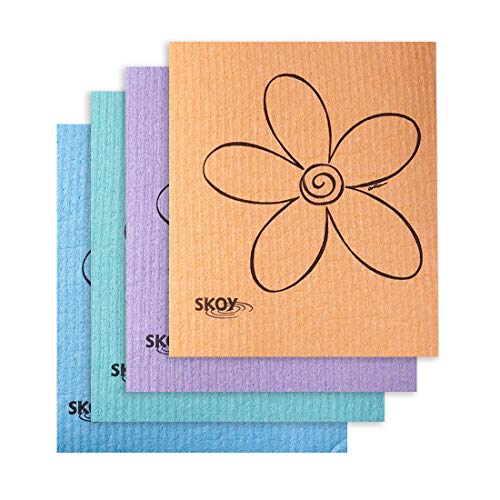Adding a bench to your shower can offer you an easier way to maneuver, whether or not you require assistance in the shower. Most shower benches are made of metal or wood. They can easily and quickly become susceptible to issues including mold, mildew, or other microorganisms that can develop in a high-moisture area. But what do you do if your teak or bamboo shower bench becomes a breeding ground for mold, to clean it without damaging the wood? We've researched how to clean both bamboo and teak shower benches properly.
Whether it's made of bamboo or teak, here's how you can clean mold off a wooden shower bench:
- Gather material and prep the bench
- Create your cleaning solution
- Apply the solution to the bench
- Rinse and dry the bench
- Apply teak oil (teak benches only)
You may find that your wooden shower bench has become inundated with mold after only a few weeks of having it. And if left untreated, the mold will continue to grow and spread around the bench. Let's discuss how to maintain the bench and help prevent the future development of mold on teak and bamboo shower benches.
How To Clean Mold Off Shower Bench

One of the best things that you can do for your shower bench is to clean it regularly. This is especially essential if you start to see water stains, soap scum (on teak wood only), and/or mildew on the surface of the bench. The sooner you remove the mold from the bench, the less likely it will be that it commonly stains the bench's surface. Here's how you can clean your bench in just a few steps.
Things you’ll need:
- 2 cups of water
- A soft-bristle brush
- 1 tsp of dish soap
- 2 cups of vinegar
- 2-gallon bucket
- A spray bottle
- Baking soda
- Cleaning sponge
1. Gather material and prep the bench
Start by gathering all of your cleaning equipment and placing it next to the shower bench. Next, remove any personal products and accessories from the bench and any of its shelves. This includes razors, soap bars, shower caps, and shampoo bottles. It's also a good idea to check the bottom of these items to ensure that they do not have any mold on them as well--you don't want to transfer it back to the bench if they do. If they show signs of mold or mildew, be sure to disinfect them with your cleaning solution before placing them back on the shower bench.
2. Create your cleaning solution
Now, it's time to create your cleaning solution. The great thing about cleaning shower benches is that you don't necessarily need to go out and buy a $7 or $10 commercial cleaner. You can create your own cleaning solution with a few all-natural products. One of the most commonly used products is vinegar. Vinegar is a great deodorizer, mold remover, and an awesome bathroom cleaner.
To clean your teak or bamboo bench, start by combing two cups of vinegar with two cups of water and pouring the mixture into a spray bottle (or a cleaning bucket). Next, add a teaspoon of dishwashing liquid to the bottle and agitate it lightly--be sure not to shake it up vigorously to avoid creating a bunch of suds. If you prefer not to use dishwashing liquid, you can also use laundry detergent.
Buy distilled vinegar on Amazon.
3. Apply the solution to the bench
Start by spraying the shower bench with the cleaning solution, making sure to cover the top, sides, legs, and underside of the bench. If you are using a bucket instead, use your sponge instead of a cleaning cloth to douse the bench with the cleaning solution to saturate the surface. Next, take your soft-bristled brush and clean the bench, starting with the top and sides.
Now, move on to the bottom of the bench and between the wood planks (where mold tends to hide). If you have trouble reaching these areas with your brush, find a disposable toothbrush to utilize. If your bench is especially dirty, you may want to wait for five to seven minutes after applying the solution before scrubbing it off. This will give the solution time to lift the mold, which may make it easier to remove.
If you live in an area with hard water, you may notice that your bench has water stains. You can also remove these with a homemade cleaning solution. To remove water stains, take a teaspoon of non-gel toothpaste and combine it with a teaspoon of baking soda. Apply the paste directly to the stains. Rub the toothpaste into the wood with your cleaning cloth or a toothbrush if the stain is proving difficult to remove.
4. Rinse and dry the bench
After you have removed all of the dirt and surface stains from the bench, turn on your shower to rinse the bench off with warm water. Next, use a soft cloth to wipe down and dry it off.
5. Apply teak oil (teak benches only)
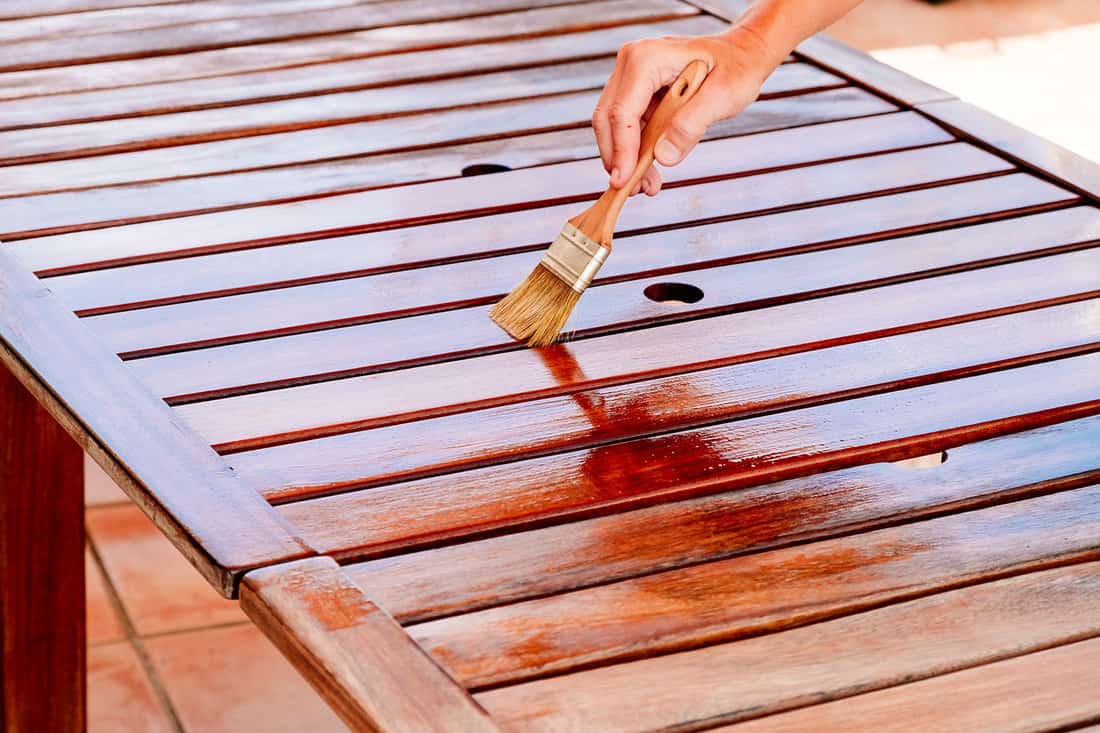
Like metals such as copper and brass, teak tends to produce a patina (a green oxidized film) when exposed to frequent or large amounts of moisture or water. If you want to preserve your teak bench, one way to do it is to apply teak oil a few times a month--after you clean it.
Teak oil serves as a wax that helps the wood repel water and moisture, making it less susceptible to mold and mildew. Start by applying a liberal amount of oil to a cheesecloth or other soft cloth. Next, wipe the oil on the bench and rub it into the surface in a circular motion. Continue rubbing the oil in until it is absorbed completely into the wood. Be sure to let the bench dry for about four or five hours before using it again.
Buy lint-free cloths on Amazon.
How To Seal Teak Shower Benches
Sealing your teak shower bench once a season can also help preserve the wood's natural oils, keeping it strong and durable. So to say, if you start to notice that the color of your teak shower bench is starting to fade, it may be time to apply a sealant. Let's look at what you'll need to do this and the steps to get it done.
Things you'll need:
- A lint-free cloth
- A sponge
- 220-grit sandpaper sheet or block
- Teak wood sealer
- A toothbrush
Clean the shower bench thoroughly with a commercial wood cleaner (designed for showers) or a homemade solution, and then let it dry for four to five hours. This allows the wood's grain to open up a bit, which can help the wood sealant adhere better. You can also use wood cleaners specially designed for teak surfaces.
Buy RMR-86 Mold & Stain Remover on Amazon.
Take your sandpaper sheet or block, and lightly sand the entire surface of the bench, starting on the top and finishing with the sides and bottom. You'll notice that the newly exposed surface is more vibrant and rich in color.
Buy a sanding block on Amazon.
Use a soft cloth or a small one-inch paintbrush to apply a coat of sealer. Let the first coat dry for about an hour or two, and then apply an additional coat. Do not use the bench for the next four to five hours to give it time to dry completely.
Do Teak Shower Benches Get Moldy?
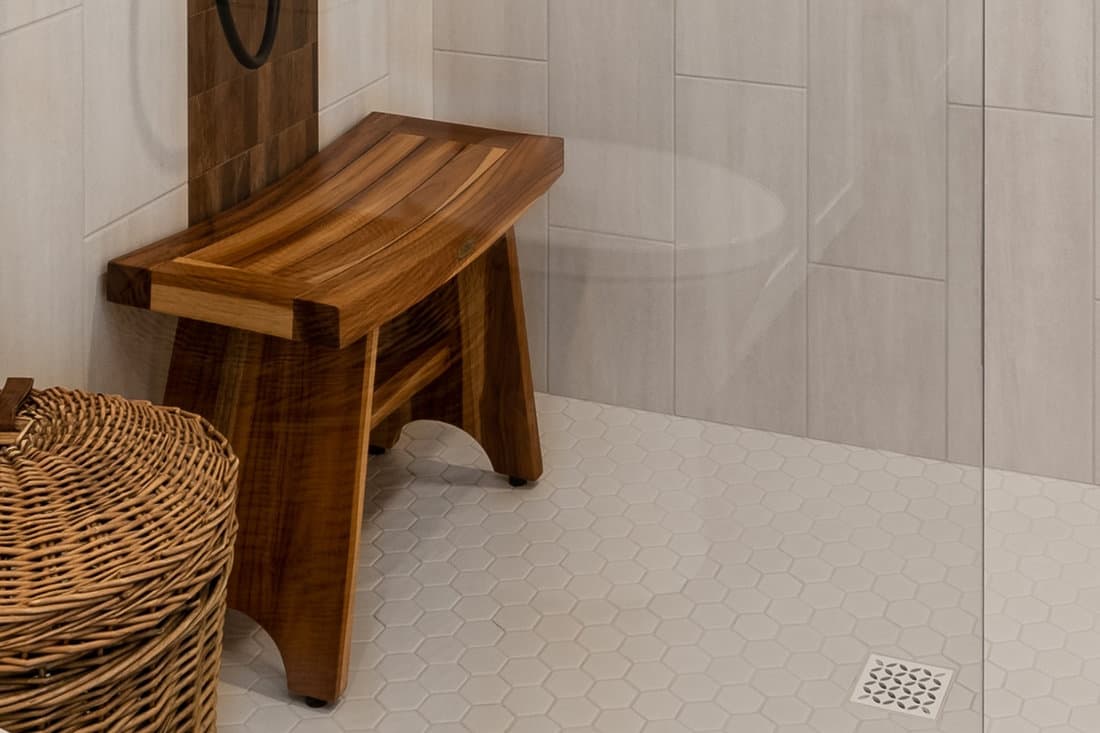
Teak shower benches are often treated with chemicals to prevent them from developing mold, mildew, and hard water stains. However, these things are bound to rise as the wooden bench is inundated with water and moisture throughout its lifetime. It's not uncommon to notice that your teak shower bench has developed small mold spots only a few weeks after purchasing it. The good news is that you can quickly and effectively eliminate the mold using the above-mentioned steps.
By this teak shower bench on Amazon.
Should You Oil A Teak Shower Bench?
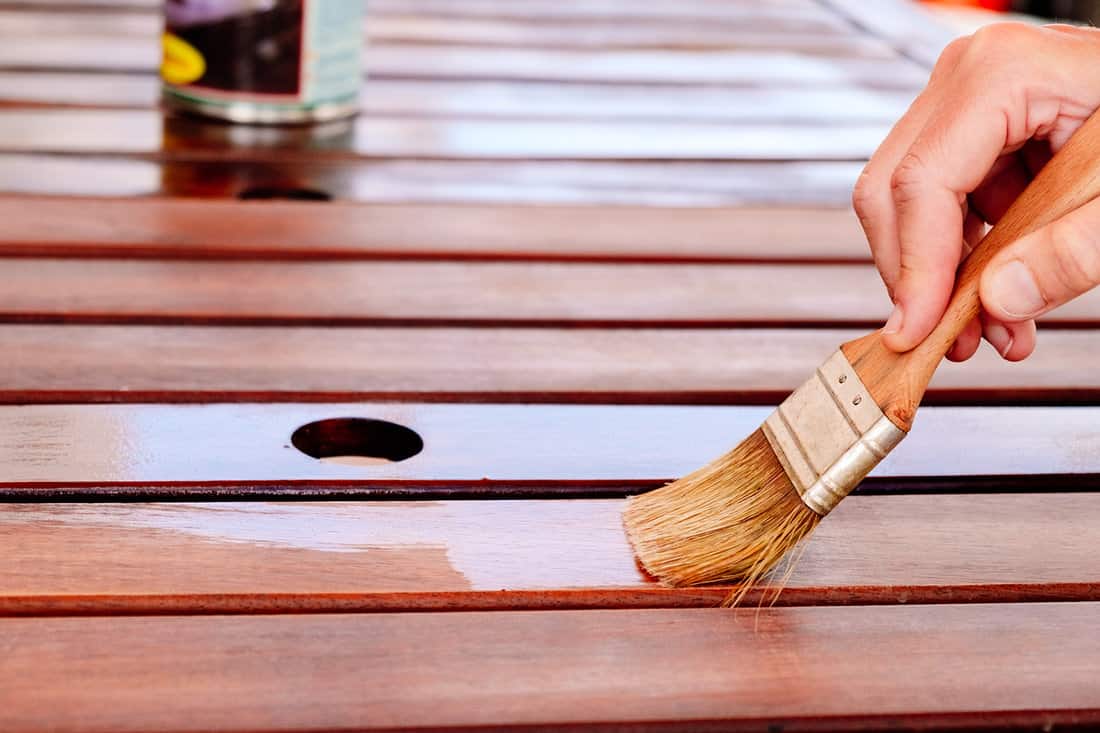
Yes, it's a good idea to periodically apply teak oil to your shower bench to help preserve its natural luster and improve its durability. Apply the oil using a dry, lint-free cloth or cheesecloth and apply the oil directly to it. Next, rub the oil into the wood's surface, making sure to cover all areas, especially those that are starting to look worn or faded. As you rub the oil into the bench, you'll notice that the color will start to return to the bench. Teak oil can be purchased at most furniture stores or online for around $7 to $10.
Is Bamboo Good For A Shower Bench?
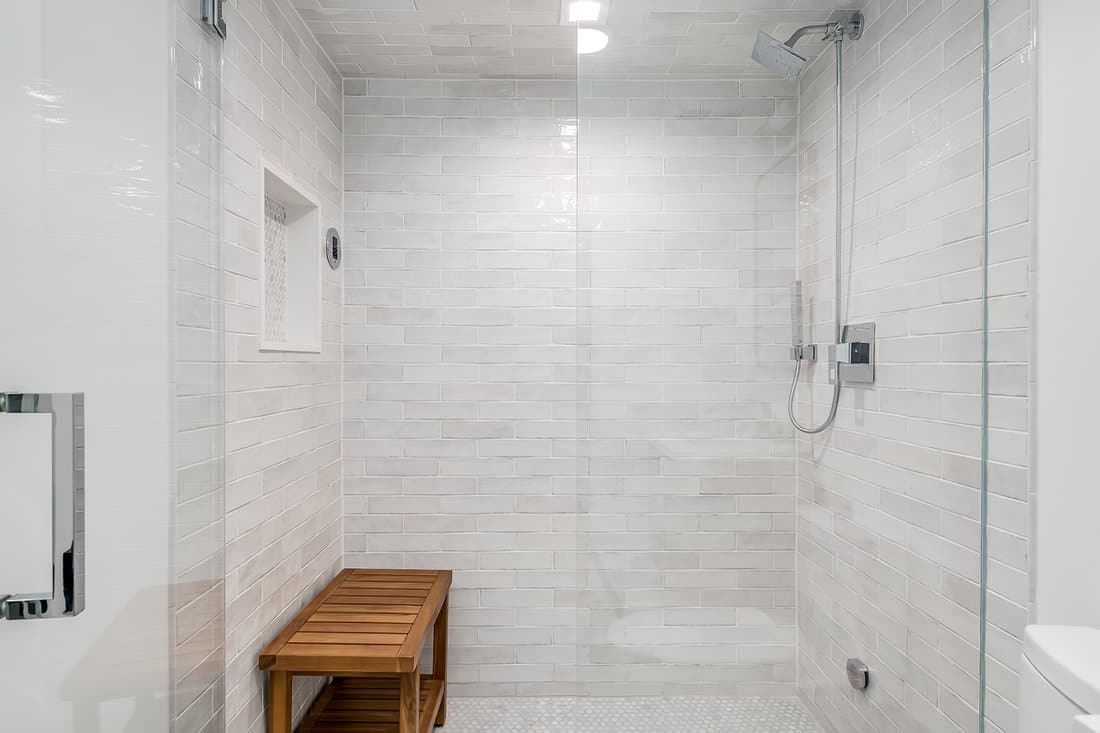
Yes, bamboo is one of the best materials that you can use for a shower bench. Not only is bamboo a very strong wood, but it is also very water-resistant due to its nativity to the humid tropical and subtropical regions of Asia, Latin America, and Africa.
Are bamboo shower benches waterproof?
Many bamboo shower benches come already chemically treated to be more resistant to mold, mildew, and insects. If you consider purchasing a bamboo bench for your shower, consider some of these benefits as a building material. Bamboo is highly water-resistant yet not entirely waterproof.
Durability
Bamboo is technically a grass and not a wood-based material--though commonly used as one. Over the years, it has become harder and tougher, even bypassing ash and oak hardwoods. It has very short fibers that make it light and flexible, and it's this bendability that makes it a comfortable option for a shower bench--it's firm but not so rigid that it's uncomfortable to sit on.
Easy Cleaning
Overall, bamboo still functions the same as wood, meaning it can be cleaned with many everyday commercial wood cleaners or homemade cleaners. A quick wipe down to remove mold, mildew, or other surface stains is typically all that's needed to get a bamboo shower bench back in tip-top shape.
Affordability
You can find a solid bamboo bench online or in local furniture stores for anywhere from $25 to $70. You can also build your own bench if you have carpentry skills, as slabs typically cost around $2 to $4 per square foot.
Buy this bamboo shower bench on Amazon.
Wrapping Things Up
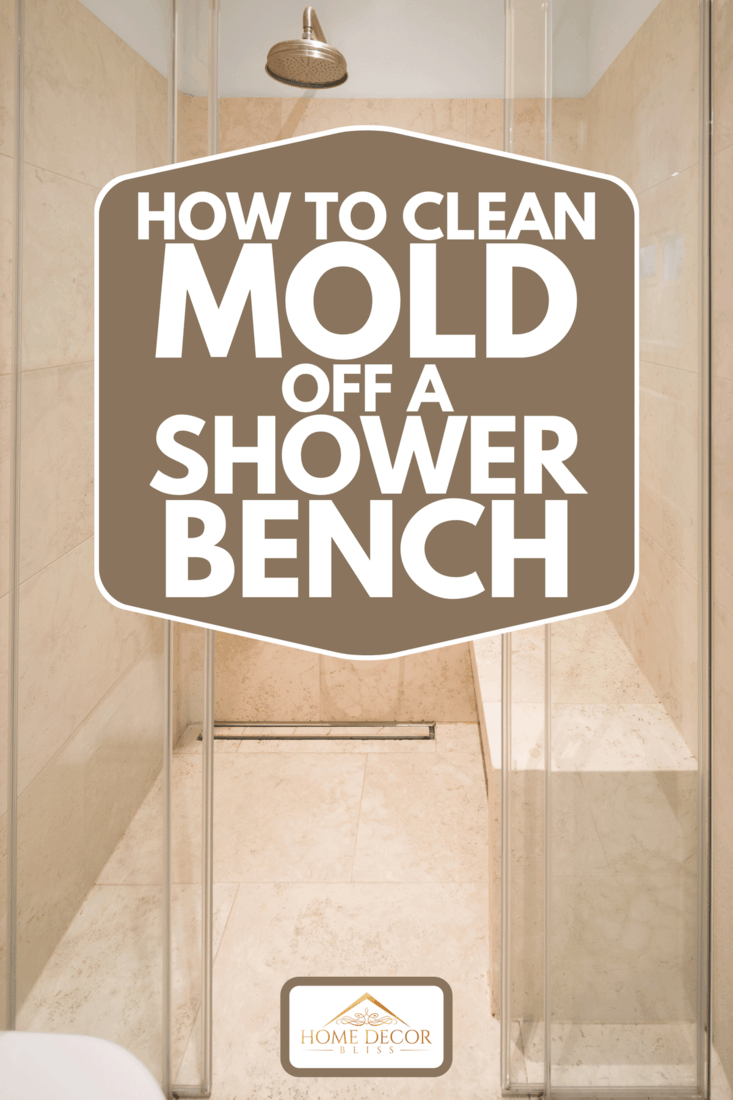
Bamboo and teak shower benches can make your shower time way more comfortable. They can also add a certain element of modernity to your bathroom decor. However, due to their wood grain, they can be susceptible to mold and mildew. The best way to keep mold and mildew at bay is to keep your shower area as dry as possible when it's not in use and to clean the shower bench regularly with a commercial mold remover or homemade solution. We hope that this post has answered any questions that you have about maintaining your wooden shower bench.
Before you go, be sure to check out our other posts:



